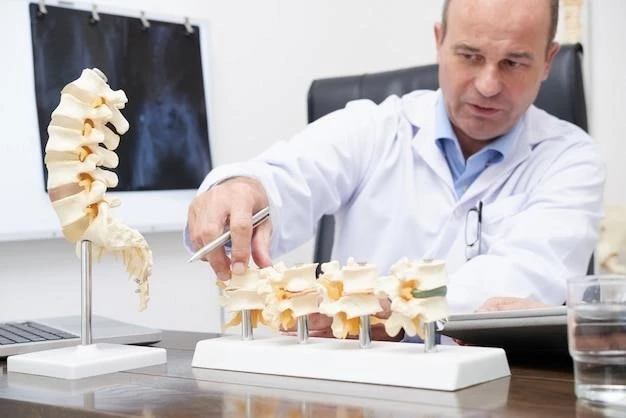Causes of Aplasia/Hypoplasia of Pelvis
Genetic factors play a role in pelvis abnormalities‚
Genetic Factors
Genetic mutations affecting pelvic development or homeobox genes can lead to aplasia/hypoplasia. Issues in HOX genes during embryonic development may contribute to these abnormalities.
Environmental Influences
Exposure to certain teratogens or environmental factors during pregnancy can contribute to pelvis abnormalities in the developing fetus. Factors like maternal illness‚ medications‚ or toxin exposure can influence the pelvic formation.
Diagnosis of Aplasia/Hypoplasia of Femur
Imaging techniques and clinical examination aid in diagnosis.
Imaging Techniques
Diagnostic tools like X-rays‚ CT scans‚ and MRI help visualize femoral abnormalities. These imaging methods assist in assessing bone structure‚ length disparities‚ and identifying any associated skeletal issues.
Clinical Examination
Physical assessments such as leg length measurements‚ range of motion tests‚ and observing gait patterns are crucial in evaluating femoral abnormalities. Clinical examinations provide valuable insights into functional limitations and potential complications.
Treatment Options for Fibula Abnormalities
Non-surgical and surgical approaches address fibula issues.
Non-Surgical Approaches
Non-surgical options for fibula abnormalities involve physiotherapy‚ orthotic devices‚ and lifestyle modifications. These methods aim to enhance mobility‚ strengthen muscles‚ and improve overall function without the need for invasive procedures.
Surgical Interventions
Surgical procedures like limb lengthening‚ deformity correction‚ or bone grafting may be necessary for severe fibula abnormalities. Surgeons work to improve alignment‚ stability‚ and functionality of the affected limb through these interventions.
Management of Ulna Abnormalities
Occupational therapy and bracing aid in ulna issues.
Occupational Therapy
Occupational therapists assist individuals with ulna abnormalities in developing fine motor skills‚ enhancing independence in daily activities‚ and adapting to functional challenges. Customized therapy plans are designed to improve quality of life and overall functionality.
Bracing and Splinting
Bracing and splinting techniques provide support and stability for individuals with ulna abnormalities. These orthotic devices help to correct alignment‚ prevent deformities‚ and improve function in daily activities by reducing pain and enhancing mobility.
Surgical Interventions for Abnormal Digits
Toe-to-hand transfers n corrective surgeries for digit issues.
Toe-to-Hand Transfers
To address abnormal digits‚ toe-to-hand transfers involve surgically moving toes to create functional fingers. This procedure enhances hand function and improves dexterity for individuals with congenital or acquired hand anomalies.
Corrective Surgeries
Corrective surgeries for abnormal digits aim to improve function and aesthetics. Procedures may involve releasing tight structures‚ realigning bones‚ or reconstructing soft tissues to enhance hand or foot appearance and functionality in individuals with digit anomalies.
Nail Abnormalities in Aplasia/Hypoplasia
Types of nail issues n treatment for abnormalities discussed.
Types of Nail Abnormalities
Nail abnormalities in aplasia/hypoplasia include malformations like anonychia‚ micronychia‚ or pachyonychia. These conditions can affect nail size‚ shape‚ texture‚ and may be associated with syndromes.nnbsp;
Treatment for Nail Abnormalities
Treatment for nail abnormalities may involve nail care techniques‚ protective measures‚ cosmetic solutions‚ and in some cases‚ surgical interventions like nail reconstruction procedures or nail bed grafting to enhance appearance and function of the affected nails.

Prognosis of Pelvis Abnormalities
Long-term implications n quality of life considerations.
Long-Term Implications
Pelvis abnormalities can impact mobility‚ pregnancy‚ and daily activities. Long-term considerations include the need for assistive devices‚ challenges in physical function‚ and potential effects on overall quality of life.nnbsp;
Quality of Life Considerations
Managing pelvis abnormalities can impact independence‚ psychological well-being‚ and social interactions. Quality of life assessments are crucial to address emotional needs‚ ensure proper support systems‚ and enhance overall patient satisfaction and happiness.nnbsp;
Research Advancements in Aplasia/Hypoplasia Syndromes
Genetic studies n innovative therapies for syndrome progress.
Genetic Studies
Research in aplasia/hypoplasia syndromes focuses on identifying genetic mutations‚ understanding inheritance patterns‚ and exploring gene therapies. Genetic studies deepen knowledge of the conditions and pave the way for targeted interventions and personalized treatments.
Innovative Therapies
Advancements in aplasia/hypoplasia syndromes include novel treatments like regenerative medicine‚ gene editing technologies‚ and stem cell therapies. These innovative approaches hold promise for improving outcomes and offering new avenues for managing complex conditions.
